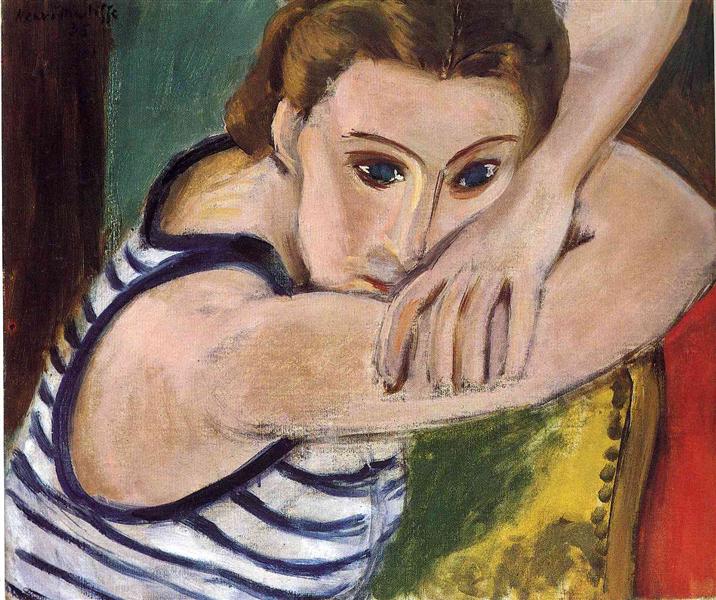Description
Henri Matisse, a fundamental figure of modern art, is known for his mastery in the use of color and form to express emotions and sensations. In his work "Blue Eyes" from 1934, which measures 72 x 60 cm, Matisse captures the essence of serenity and introspection through a seemingly simple but deeply evocative composition.
The painting features a woman with dark hair, dressed in a simple dark-colored outfit, sitting in a contemplative pose. Her eyes, a deep and penetrating blue, are the focal point of the work, from which an enveloping calm seems to emanate, immediately capturing the viewer's attention. Matisse makes the eyes, with their intense color and expression, the soul of the painting, providing a dynamism that contrasts with the serenity of the other elements.
The use of color in "Blue Eyes" reflects Matisse's stylistic maturity. The predominant tones are soft and harmonious, moving between beiges, browns, and blues with a mastery that only a painter of his caliber can achieve. The fluidity with which he handles these tones highlights the lines of his female figure, creating a perfect balance between form and space. This handling of color does not seek merely realism but emphasizes an atmosphere that transcends the merely visual.
Matisse's technique in this work is equally remarkable. The brushstrokes are precise and well-defined, showing absolute control of the brush. The precision in the details of the face and especially in the eyes reflects a psychological depth that invites the observer to a silent and almost intimate reflection with the model. The absence of a detailed background also plays a crucial role, as it allows all the attention to be directed towards the central figure and her hypnotic blue eyes.
The period in which Matisse painted "Blue Eyes" is significant. During the 1930s, the artist, after having explored more avant-garde stances, began to develop a more introspective style focused on the search for the purity of forms and feelings. "Blue Eyes" is a clear example of this stage, where Matisse combines his technical skill and creative genius to explore the essence of humanity and emotion through what, at first, may seem like a simple representation.
In the context of Matisse's overall work, "Blue Eyes" shares similarities with other pieces from this period, where the female figure is recurrent and becomes a vehicle to explore various emotional and psychological states. The connection between the viewer and the work is established not only by the technical detail but by the artist's ability to infuse his characters with a life of their own, through their gazes and attitudes.
Henri Matisse continues to be one of the pillars of modern art, and "Blue Eyes" is a testament to his ability to capture the human essence in its purest and truest forms. The work, with its masterful handling of color, form, and expression, continues to fascinate viewers and offer new interpretations with each observation. It is a piece that confirms Matisse's genius by showing that, in apparent simplicity, resides a complexity of feelings and thoughts that are as eternal as art itself.

